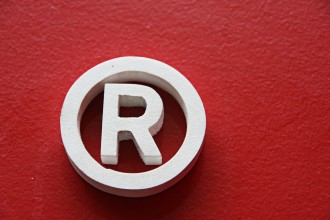January 12, 2019
Advertising Doesn’t Cost, It Pays (Unless You’re Not Careful)
Advertising, press releases, and even product packaging all communicate the company’s value proposition to the consuming public. Occasionally, though, they can do more harm than good. These items are a direct reflection on the company and its products and services, and need to be carefully vetted. This requires more than careful proofreading, such as fully vetting the content to reduce the risk of embarrassment and even legal problems.
Here is a checklist of items to consider when reviewing advertising, press releases and product packaging:
OWNERSHIP
- Did we create or obtain the right to use all of the text?
- Did we create or obtain the right to use all of the images?
- List all third party material used (including third party material we believe we acquired):
- Do we have written permission to use the third party material, or has a Company lawyer concluded that the use is appropriate?
PUBLICITY & PRIVACY
- List each person identified, mentioned, or depicted.
- Do we have written permission/release to identify, mention, or depict this person?
- Does it appear that any person or entity is providing a testimonial, or expressly or impliedly endorsing our products or services?
- Do we have written permission/release to present this testimonial/endorsement?
- Is the testimonial/endorsement accurate and fair?
- If the testimonial/endorsement paid, is that fact disclosed?
- Is there any reason to believe that the person identified, mentioned, or depicted could be controversial or divisive, or otherwise impair our image or that of our products and services?
CONTENT
- Is the use of all unqualified superlatives necessary and justified? (E.g., maximum, highest, lowest, critical, essential, important)
- Is the use of all absolute terms necessary and justified? (E.g., -free, -proof)
- Are claims regarding “free” (i.e., no-cost) accurate?
- Are there any claims regarding safety?
- Are they necessary?
- Are they accurate?
- Are any claims regarding “improved” truthful?
- Have claims of improvement been vetted with legal (e.g. subsequent repair)?
- Are claims regarding place of manufacture (e.g. “made in USA”) accurate?
- If there are specific claims about our products or services (e.g. rankings or numerical data), are they accurate, provable, and documented?
- If there are comparisons with third party products, are they accurate, provable, and documented?
- If there are references to third parties or third party products, do we have express/implied permission, or are they otherwise legally justifiable?
- Are all such references accurate, provable, and documented?
- Are all such references not disparaging?
OUR INTELLECTUAL PROPERTY
- Trademarks
- Existing Marks
- List all existing marks used.
- Are our existing trademarks used correctly?
- Are they used as an adjective?
- Are they presented correctly (in compliance with existing usage guidelines) and consistently?
- Are they identified with a TM, SM, or ®?
- Are they displayed distinctively?
- List all existing marks used.
- New Marks
- List all existing marks used.
- Have our new marks been cleared?
- Have we applied to register our new marks?
- Are our new trademarks used correctly?
- Are they used as an adjective?
- Are they presented correctly and consistently?
- Are they identified with a TM, SM, or ®?
- Are they displayed distinctively?
- List all existing marks used.
- Existing Marks
- Inventions and Patents
- Are any of our inventions mentioned?
- Has a patent application been filed?
- Should the invention be mentioned/disclosed at this time?
- Are any third party inventions mentioned?
- Should the invention be mentioned/disclosed at this time?
- Copyrights
- Generally, press releases do not bear copyright notice as copying is to be encouraged.
- Packaging and advertising, however, can and should be copyrighted.
- Trade Secrets
- Are any of our trade secrets or confidential information mentioned?
- Should they be?
- Are any third party trade secrets or confidential information mentioned?
- Should they be?
- Are any of our trade secrets or confidential information mentioned?
THIRD PARTY INTELLECTUAL PROPERTY
- Trademarks
- List all third party marks used.
- Are all third party trademarks use truthfully?
- Are the third party trademarks used correctly?
- Are they used as an adjective?
- Are they presented correctly and consistently?
- Are they identified with a TM, SM, or ®?
- Are they displayed distinctively?
- Do we identify the correct owner of the mark, or at least disclaim we are the owner of the mark?
- List all third party marks used.
- Inventions and Patents
- Do we describe our products or services in a way that might indicate they are covered by a third party patent?
- Do we make any claim about our product or service that might indicate they are covered by a third party patent?
- Copyrights
- Do we have written permission to use third party works (text, images)?
- Do we use correct copyright notice?
- Trade Secrets
- Are we disclosing any third party confidential information?
- Do we have written permission to do so?
DISCLAIMERS & EXPLANATIONS
- Are any disclaimers or explanations needed?
- For example, related to: third party uses, claims or statements made about the product, guarantees or warranties made, depictions of the product or service.



































